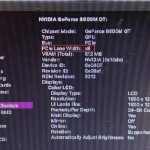The kitchen and bathroom in our house had several older water supply stop valves that required several turns to close and often leaked even when they were supposedly closed. When putting a bathroom in the basement 14 years ago I foolishly believed the older water supply stop valves were inferior to the newer quarter-turn stop valves that others bragged about.
After installing several of the newer quarter-turn stop valves I’m already finding them to have failed – when turned to the off position, they still allow a trickle or even a stream of water to flow out, and this is described by others too. The older style valves would also fail after several years, but they had rubber washer rebuild kits to rejuvenate the valve’s operation. In the case of the new quarter-turn stop valves, I contacted one manfacturer, Nibco, and spoke to a technical support person, Jeff. I asked if there was a rebuilt kit I could purchase for a failed valve I own and he said “No, none of the parts on that valve are field-serviceable”.
Look, I work for a company that makes a lot of money mine minerals from the ground, but it will be difficult to sustain this bleed rate on the planet if we’re constantly mining new minerals and, even if we scrap the existing valve, throwing energy towards making new supplies. Worse, replacing the valve isn’t even a one-to-one process. While I ultimately purchased a replacement valve of the same model from Menards, Nibco must have changed manufacturers because the new body was shorter than the last one and required me to shorten the 1/2-inch diameter copper pipe poking out from the wall. Putting a new rubber washer on an old style valve would have required 1/10 the time I spent installing a brand new quarter-turn stop valve body.
Don’t believe the hype, quarter-turn valves are great for a few uses, but long-term these valves will cost you more money and time. If you don’t value either, ignore this post.

